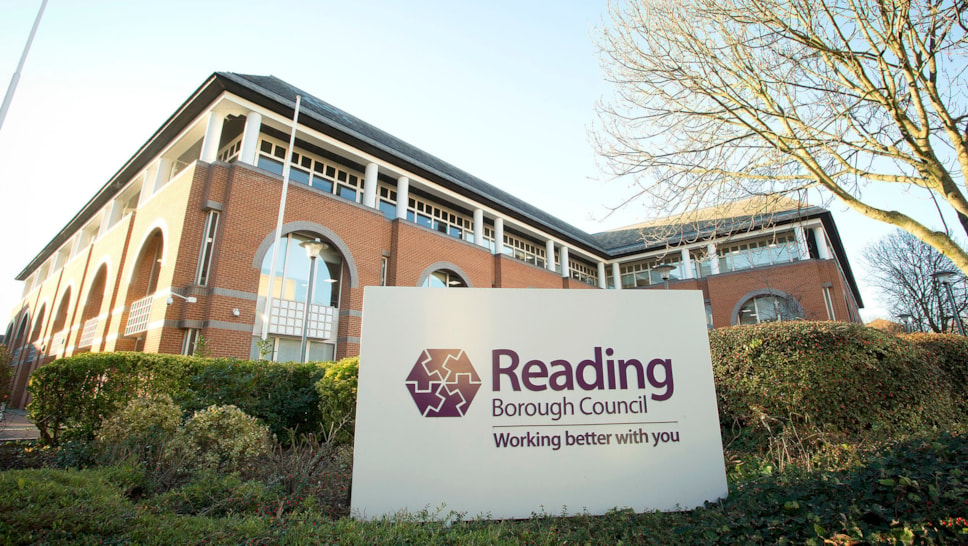
Reading Council Submits LGR Bid to Keep All of Tilehurst in Berkshire
- Reading Council has today submitted its Local Government Reorganisation proposal
- Proposal is for three Tilehurst Wards to move into Reading, if the Government is minded to agree plans to create a new 'Ridgeway' council
- Moving these Reading suburbs into the town fits Government criteria that LGR proposals should be based on 'sensible economic geography'
Reading Council’s proposal to keep all of Tilehurst in Berkshire was formally submitted to Government today (Nov 27).
Following approval at a Council meeting on Tuesday night (Nov 25), the LGR Submission is for the West Berkshire Wards of Tilehurst Birch Copse, Tilehurst & Purley, and Tilehurst South & Holybrook to move into Reading, rather than forming part of Oxfordshire and a significantly larger new ‘Ridgeway’ council.
The Council’s position is that moving these suburbs of Reading into a predominantly rural new ‘Ridgeway’ contradicts the Government’s prescribed criteria that Local Government Reorganisation (LGR) proposals should be based on ‘sensible economic geography.’
What was once an entirely logical boundary line drawn over a century ago to separate fields, now splits communities. It has failed to adjust to an expanding Reading urban area where residents just across the border understandably consider themselves as belonging to a vibrant, dynamic, economically successful and culturally diverse town.
Reading Council’s submission to Government requests that if the Secretary of State is minded to agree proposals to create a new ‘Ridgeway’ council, Reading’s boundary is updated to more accurately reflect its geography and its economic footprint.
Over the past few months, Reading Council has carried out significant public consultation, modelling and data analysis to build a compelling case to Government. Work undertaken included the commissioning of an independent and representative survey of residents living in the three Tilehurst Wards, to understand just how extensively they use facilities in Reading Borough.
In contrast to Newbury - which is 18 miles away from the three Tilehurst wards - Reading Town Centre is only three miles, or a short 10/15 bus ride away. As a result, Tilehurst residents understandably take advantage of Reading facilities including Reading Buses, the Hexagon Theatre or the modern new Rivermead Leisure Centre, as well as Reading facilities nearer to the boundary line including Tilehurst Library, Meadway Sports Centre, Arthur Newbery and Prospect Parks, Tilehurst Community Centre and Ranikhet and Southcote Children’s Centres.
Results of the independent survey show:
- Residents of the three wards use Reading’s culture and leisure facilities as much as Reading residents, and in some cases even more
- 34 – 37% of these residents used Reading’s leisure centres. Around 10% of all visits to Reading leisure centres come from West Berkshire residents, with the proportion rising to 30% for Meadway Sports Centre
- Use of Reading’s Tilehurst Library was also high, reflecting it is the nearest library to these wards and that no local library provision is offered from West Berkshire for these residents
- Two thirds of these residents have used Reading Buses over the last year and more than half have made use of Reading car parks
The same independent survey, carried out with a representative sample of residents across the three wards, found:
- Strong support from residents that decisions about local services should be made in Reading: 60% of Tilehurst Birch Copse residents preferred local decisions to be made in Reading, rather than Newbury (37%) or Abingdon (3%). In Tilehurst & Purley and Tilehurst South & Holybrook Wards, around half of residents supported local decisions being made in Reading
- People aged 18-44 were even more supportive. 75% of this age group expressed a preference for Reading to make decisions on local services in Tilehurst Birch Copse, with the figure 64% and 66% for the remaining two Tilehurst wards
Reading Council research also shows some opportunities for service improvement in areas such as bin and recycling collections, tackling homelessness and sustainable transport, should its proposal be agreed by Government.
Councillor Liz Terry, Reading Borough Council Leader, said:
“To pretend that these three Tilehurst Wards are anything other than suburbs of Reading, flies directly in the face of the Government’s prescribed criteria that proposals should be based on ‘sensible economic geography.’ That is the basis of Reading’s submission.
“Alongside the positive feedback I received from recent face-to-face meetings in these communities, it was helpful to see the results of the independent survey confirm what we already knew - that residents living in these areas see themselves as part of Reading, rely on services provided by Reading Borough Council and yet, have absolutely no say over how these services are run.
“West Berkshire’s own Local Plan describes these three wards as ‘urban with a close functional relationship with Reading’ and ‘benefitting from the facilities and services it provides.’ In contrast, the ‘Ridgeway’ proposal is focused - in its own words - on reflecting ‘the unique character of our rural area.’ That certainly doesn’t sound like it would be prioritising these urban areas.
“I want to be clear. Reading’s intention has never been to block the ‘Ridgeway’ proposal, but once West Berkshire opted to join with Oxfordshire’s proposals, Reading residents would rightly expect my focus to be how this might impact this town’s future and securing the best outcome for our residents. The Local Government Reorganisation process offers Reading a once-in-a-generation opportunity to address an outdated and constrictive boundary in the most pragmatic way possible.
“Unlike other LGR submissions, Reading is in the peculiar position of not seeking to create a new authority, but a change to its existing boundary. Final decisions will ultimately be made by the Secretary of State, but we are clear our proposal fundamentally strengthens local democracy by aligning where people pay their Council Tax and where decisions are made, with local identity, local services and patterns of daily living.”
While no Berkshire council has been asked to submit reorganisation plans at this time, West Berkshire’s decision to form part of Oxfordshire’s reorganisation plans has prompted Reading Council to act, as proposals for a new ‘Ridgeway’ council would have a material impact should Reading be required by Government to submit reorganisation proposals in the future.
Reading Borough Council’s LGR Submission additionally makes clear that if the Government is minded to agree its modification to the ‘Ridgeway’ council proposal, existing Parishes would remain, providing a strong voice for the former West Berkshire communities.
Cllr Terry added:
“Reading’s economic success is undeniable, but its footprint is just 15.5 miles, although its catchment area is significantly larger. That means a substantial proportion of Reading’s workforce and housing market lies completely outside of its control. Key strategic decisions on housing, on transport and on infrastructure are spread across multiple council areas, which leads to delays, higher costs and missed opportunities. It makes every one of those tasks harder, slower and more expensive, because both decision making and funding are fragmented.
"This Government has an ambitious agenda for growth, and as an economic power in the region Reading is determined to contribute to that ambition. As Reading’s economy continues to grow however, the cost of current constraints continues to rise and that is what we are seeking to address through this process.”


